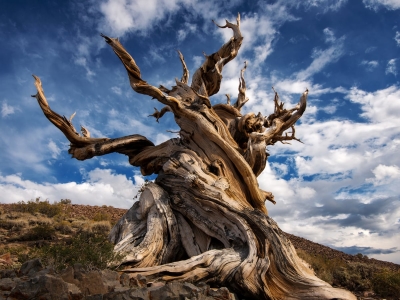
Methuselah, a Great Basin bristlecone pine located in the White Mountains of California, is known as the oldest non-clonal tree in the world. It is said to be over 4.850 years old. Its exact location is kept a close secret so as to protect it from tree vandals.
Though these are some of the oldest individual trees in the world, they are technically not the oldest living organisms. There are several clonal colonies — which are made up of genetically identical trees connected by a single root system — that are much older.
For example, the Pando, or “trembling giant,” is a clonal colony made up of more than 40,000 individual quaking aspen (Populus tremuloides) trees, according to the U.S. Forest Service. Located in Fishlake National Forest in south-central Utah, the colony is estimated to be an astounding 80,000 years old.
In 2008, peculiar circumstances led to the discovery of the world’s oldest individual from a clonal tree: Old Tjikko, a 9,550-year-old Norway spruce located the in Fulufjallet Mountains in Sweden, according to scientists at Umea University. Old Tjikko is suspected to be the only living trunk of an ancient clonal colony like the Pando.
The tree’s true age was revealed by carbon-14 dating its root system. According to a statement from Umea University, scientists found four generations of spruce remains at the site, all with the same genetic makeup. Spruce trees can multiply with the root penetrating branches to produce exact copies of themselves, so while the individual trunk is younger, the organism has been cloning itself for at least 9,550 years.
Umea University also reported that a cluster of around 20 spruces were found in the Swedish mountains that are estimated to be over 8,000 years old. The trees are able to survive very harsh weather conditions, but a warming climate has allowed them to thrive.
Compared with all of these ancient trees, the oldest living animal, a 183-year-old tortoise, is a young whipper snapper.
Credit : Live Science
Picture Credit : Google




